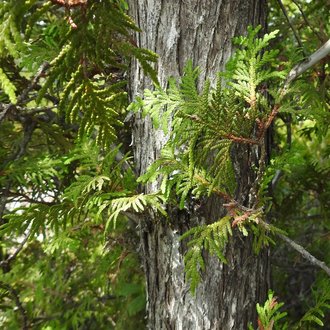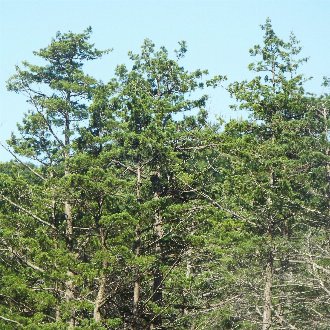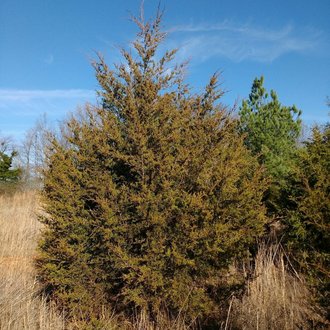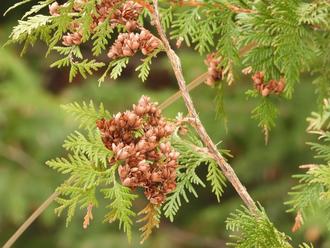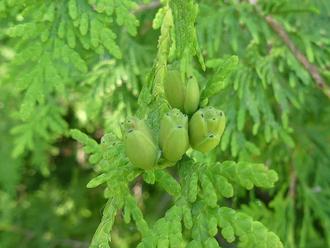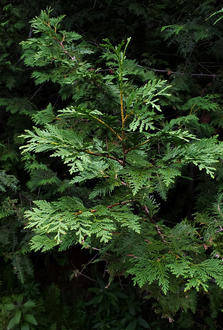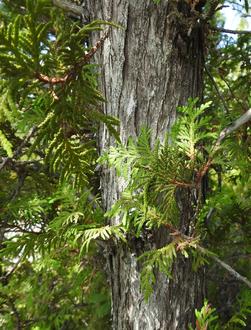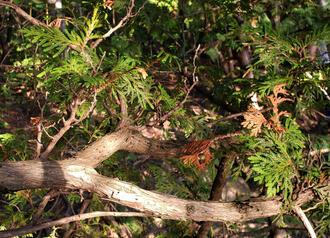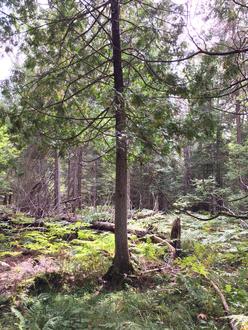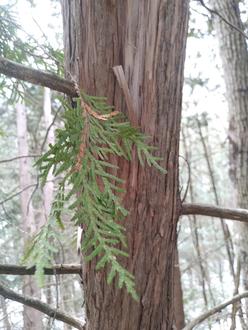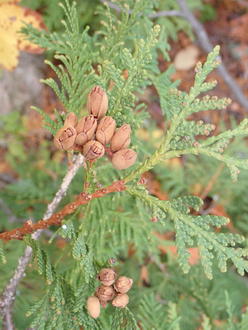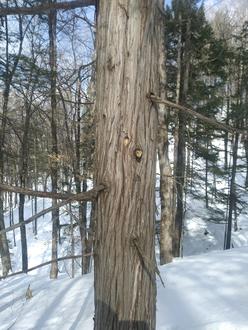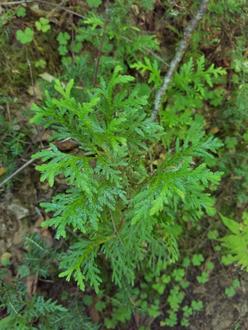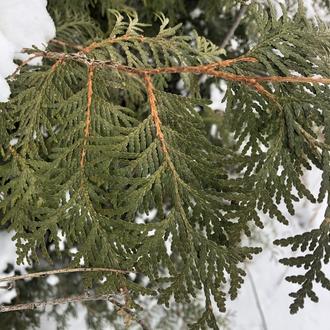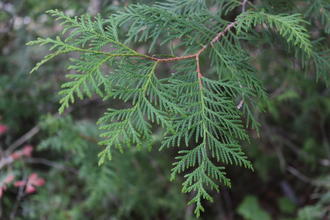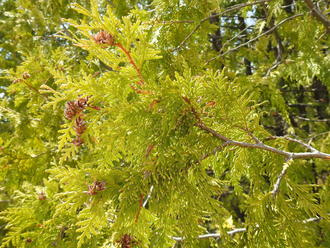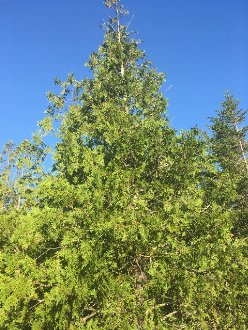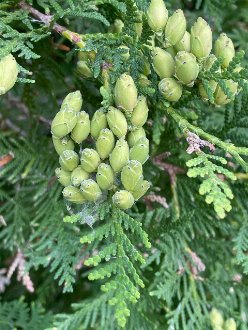Northern White-Cedar (Thuja occidentalis L.)
Also known as eastern arborvitae, eastern white cedar, northern whitecedar.
↑Summary
A slow-growing, medium-sized coniferous tree of the northeast, found on moist sites and those with neutral to alkaline pH.
↑Range - Expand
| Legend | Color |
| Native or Expanded or Not Present | |
| Native | |
| Native or Not Present | |
| Native or Expanded | |
| Introduced or Not Present | |
| Native or Introduced |
This tentative map is based on our own research. It may have limited data on Canada and/or Mexico, and there is some subjectivity in our assignment of plants as introduced vs. expanded. Read more in this blog post.
Although this plant occurs somewhere in each of these regions, it may only occur in a small part of some or all of them.
↑Description & Identification
A tree to 40-50 feet (12-15 m), rarely taller. Often grows with multiple trunks. Foliage is a branching, flattened array of scales.
↑Similar Plants
↑Habitat
Found on mesic to moist sites with more neutral-to-alkaline pH. On lowlands, found in swamp forests, transitional areas between bogs and surrounding hardwood forest, and along streambanks and lakeshores. On upland sites, usually found on limestone and other calcium-rich soils, and areas around seeps with higher moisture content.
Usually limited to sites protected from fire, or where fire return intervals are very long: can colonize sites disturbed by fire, but usually eliminated if and when fire returns.
Occupies different successional stages on different sites: can be a pioneer species on limestone cliffs, following fire, windthrow, or logging. However, can be a late-successional species on sites where it replaces balsam poplar, tamarack (Larix laricina), black spruce, and speckled alder. On sites able to support sugar maple, beech, or eastern hemlock, it can eventually be replaced by those species, but its long lifespan can make it persist for centuries.
↑Life Cycle
Northern white-cedar is a slow-growing species. Seedlings grow an average of 3 inches annually. Root system is opportunistic based on conditions: in saturated soil, develops a shallow root system, but in well-drained soil, grows deep roots. On rocky uplands, develops a wide-spreading root system growing into cracks in rocks.
Cone production begins around 6 years of age, but substantial quantities only begin to be produced around 30 years, and peak production does not occur until after 75 years. The best crops occur at 2 to 5 year intervals, but there is significant seed production in all years.
Seeds are wind-dispersed and tend to travel 150-200 ft (45-60 m) from the parent tree.
Seeds require a period of cold dormancy, and germinate in response to high temperatures (84°F/29°C), usually only reached in summer. Although germination rates are high, seedling mortality is high, usually due to drought, as seedlings require a steady moisture supply.
Trees about five years old or older can reproduced vegetatively by layering. Layering is an important reproduction method in swamps, but is less common on drier sites. Fallen trees with sufficient root systems to stay alive can also grow adventitious roots where their foliage contacts the ground, and will grow new upright branches.
Trees may live over 800 years; one tree has been dated at over 1,000 years old.
↑Uses
Widely used in landscaping, where it is valued for its long lifespan, attractive foliage and form, and adaptability to a wide range of conditions.
The wood is valued for its lightness and decay resistance. It is workable, but soft and weak. It is used in outdoor applications where decay-resistance is more important than strength, such as shingles and paneling. Logs are also used to make log cabins, as the wood provides good thermal insulation.
↑Related Plants
In an example of how the common names can obscure taxonomic relationships, this species is most closely related to western redcedar (Thuja plicata), with which it does not overlap in range.
The broader Cupressoideae of the Cupressaceae (Cypress) family also contains the atlantic white cedar (Chamaecyparis thyoides) and various juniper (Juniperus sp.) species, as well as the introduced Chinese arborvitae (Platycladus orientalis). Atlantic white cedar overlaps with this species only in a small region of New England.
↑Links & External Resources
• Northern White Cedar | The Wood Database (About This Site)
• Northern White-Cedar | Fire Effects Information System (FEIS) (About This Site)
• Thuja occidentalis (Northern White Cedar) | Illinois Wildflowers (About This Site)
• Thuja occidentalis (Northern White-Cedar) | USDA PLANTS Database (About This Site)
• Thuja occidentalis | Go Botany (About This Site)
• Northern Whitecedar | iNaturalist (About This Site)
• Thuja occidentalis (American Arborvitae) | Missouri Botanical Garden Plant Finder (About This Site)
• Northern White-Cedar | Virginia Tech Dendrology Factsheets (About This Site)
• Northern White-Cedar | Silvics of North America (About This Site)
• Thuja occidentalis | Biota of North America Project (BONAP) (About This Site)
• Thuja occidentalis | NatureServe Explorer (About This Site)
• Thuja occidentalis | Flora of North America (About This Site)
• Northern White Cedar | Maryland Biodiversity Project (About This Site)
• Thuja occidentalis L. (American Arborvitae, Northern Whitecedar, Flat Cedar) | Digital Atlas of the Virginia Flora (About This Site)



